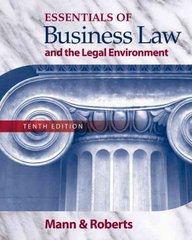Questions about the case of AIR CANADA
Questions:
- A comparison of the ACE share price to "the sum of the parts" implied a negative value for Air Canada, but would carving out the airline capture additional value? What would be the costs and benefits?
- If Air Canada was sold, what should the structure be? When should the sale take place?
- Since selling the airline would mean that all the pieces of ACE were carved out, what would become of the holding company and its CEO?
AIR CANADA Robert Ivlilton had been lscina'ted by ying ever since childhood and dreamed of running an airline. But as he grew up and entered the industry, Iviilton came to see how poorly the major \"legacy\" airline; performed nancially. The romance of ying could not obscure the diiculty of sustaining a prot in this industry. After a series ofjobs in the airline industry, M'ilton came to Air Canada in 1992. IWhile COO of the airline, he became convinced that the various parts of the airline operated separately could be worth more than the combined company. Nlilton proposed that the company examine its various mctional areas to nd unrealized value in divisions that could be standalone entities. Then, Air Canada could consider each business for carving out (separately incorporating each subsidiary and selling a raction of the shares) or spinning o' (divesting through a distribution of all the new company's shares). 1When Milton became CEO in 1999, he moved to realize his idea. But before ltinlton set his plan in motion, a series of events rocked Air Canada. Just two weeks after Milton became CEO, Air Canada was the object of a hostile takeover bid that required an unplanned merger with Canadian Airlines, the country's second largest airline, to resolve. The inability to integrate the two airlines quickly brought some infrastructure and. labor ine'iciencies in the short term. Then the collapse of the dotcom industries in 2000 curtailed business travel. Just as Air Canada was adjusting to this downturn, the September 11 U5. terrorist attacks further reduced the number of passengers and required expenditures for security. Meanwhile, fuel prices began to climb precipitously. Then in 2003, SAKS (Severe Acute Respiratory Syndrome) hit lChina and Canada, wiping out travel to the Far East and to Canada, particularly to Toronto, Air lCanada's huh- With declining passenger numbers and little liquidity, Air Canada led for the Canadian equivalent of US. Chapter 1] bankruptcy. Bankruptcy provided a respite for the beleaguered airline and allowed hrlilton and his team to nalize the restructuring. Management streamlined operations and began breaking up the organization into subsidiaries. The company emerged from bankruptcy in October 2004 as a holding company, ACE Aviation Holdings Inc. (ACE), with ten wholly owned subsidiaries. By the summer of 2006, Ivliltorr was well into the test of his theory that the parts of the airline were worth more than the airline itself. The company had carved out Aeroplan, its equent ier program, and Jazz, its regional airline, and had publicly discussed spinning offthe maintenance unit. The one large asset remaining was the airline, Air Canada itself







